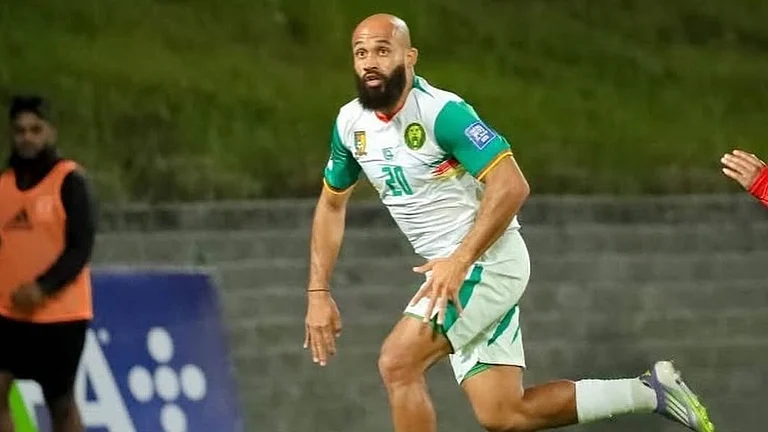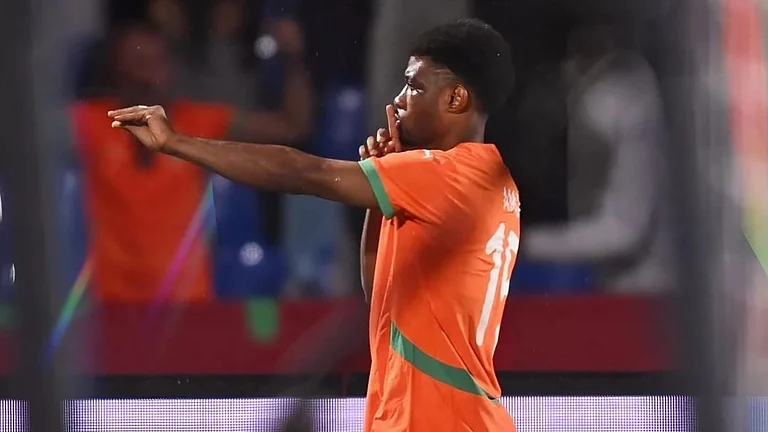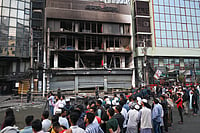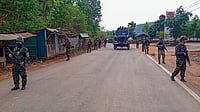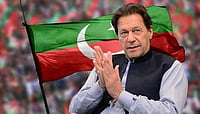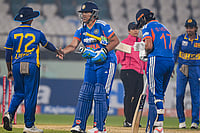ON July 23, 1983, a jeep and a truck with 14 soldiers and an officer on a routine patrol from Palali army base in northern Jaffna peninsula were ambushed by about 25 Liberation Tigers of Tamil Eelam (LTTE) men. Only two soldiers survived. The ambush sparked off a festering ethnic war that has claimed over 50,000 lives and shows no signs of abating 13 years later.
As the then J.R. Jayawardene government dithered over whether to bury the dead in Jaffna to avoid trouble at the funeral, the people who were waiting for the bodies at a cemetery in Colombo, lost their patience. In a week-long frenzy, hundreds of enraged Sinhalese stormed Tamil houses and businesses, killing hundreds and leaving tens of thousands homeless. Most Tamils, who had lived in peace with the majority Sinhalese in the south for generations, fled to the Tamil-dominated north and east of the island. Hundreds of youngsters joined the rebels based in Tamil Nadu, where they were trained and armed by the Indian government.
Every year since then, from middle to end July, Sri Lanka's armed forces are placed on full alert and security in the capital is tightened, fearing revenge attacks for the 1983 anti-Tamil riots. To overcome this, the rebels tended to launch their attacks long before or after the anniversary.
But this year, the 13th anniversary of the riots, the rebels changed tactics. On July 19, they launched their biggest-ever military attack on the sprawling but isolated army camp in north-eastern Mullaitivu. After two days of fierce fighting, the rebels overran the camp which housed an estimated 1,100 soldiers, naval personnel and policemen. A team of elite commandos, airlifted to the area on June 20, was pinned down by heavy rebel fire. "They were everywhere. The pilot landed the MI-17 helicopter almost on top of a 50 mm antiaircraft gun. The dust thrown up by the chopper gave us enough cover to attack the machine gun position and take cover," said a commando, injured in the attack.
It took six days for the rescue party to reach the devastated camp. By then, "there were just 12 soldiers left. They had hidden in a water well," a military official said. It was the army's biggest debacle. "Losing two battalions of infantry is a major blow. It takes a long time to train an infantryman and it takes even longer to get him battle-hardened," the official said, adding that losing up to 30 officers was another setback.
The only good news for the army is that the soldiers managed to destroy most of the heavy weapons in the camp. "All we need right now is for the LTTE to get their hands on long-range artillery...fortunately, our boys destroyed them," the official said. However, there is scepticism over this claim as initial reports said rebels had looted a lot of arms, including artillery pieces.
The rebels, too, appear to have suffered heavy casualties. Intelligence officials said intercepted rebel radio communications indicated that at least 500 rebels had died.
Then, as the army rescue columns entered Mullaitivu camp 280 km away from the capital on July 24, two massive bombs exploded in a train during rush hour in a Colombo suburb. At least 67 commuters were killed and 450 injured.
However, Lawrence Thilakar, the Paris-based international spokesperson and the LTTE's only central committee member living outside Sri Lanka, denied that the Tigers were responsible for the train blasts. "We wish to reiterate that it is not the policy of the LTTE to attack civilian targets. There are interested parties within the Sinhala-ruling establishment who feel the need to raise chauvinistic hysteria in order to facilitate the military option, particularly when the Sinhalese people are losing their patience with their government's war efforts," Thilakar told Outlook.
Describing the attack on the army camp as a slap on the face of the government, which is promoting the idea of a military solution to the Tamil issue, Thilakar said Mullaitivu "symbolises the Tamil resistance and it is a clear signal that we will not tolerate the colonisation of our traditional homeland. While Sri Lanka thought that a militarily-weak LTTE would compromise on Tamil rights, the recent attack should force the Sri Lan-kan government to abandon its military posture and come to the table".
Fearing another 1983-type backlash against Tamils, President Chandrika Kumaratunga appealed for calm on state television. When there was no backlash even 48 hours after the blasts, the palpable tension eased in the capital.
The attack comes after a series of major reversals for the LTTE after it broke off peace talks with the government on April 19, 1995, and relaunched the war. The army has since thrown the rebels out of their Jaffna stronghold and killed around 4,000 LTTE fighters. Pumped up by the victories, the jubilant government was announcing that the war would be over by the end of the year.
Says a defence analyst of the Centre for Policy Alternatives: "Mullaitivu is a morale-booster for the LTTE in political and military terms as well as for their objective of demonstrating that they are a force to reckon with after their defeat in Jaffna."
In its counterattack, troops moved out of Jaffna on July 26 to recapture parts of the northern mainland still under rebel control, while thousands more are being mobilised in an apparent attempt to attack the LTTE's One Four base deep in the Mullaitivu jungles, said to be the hideout of their elusive leader, Velupillai Prabhakaran.
The attack has deeply embarrassed the government and the army as it reflects a massive intelligence failure. Which explains the virtual ban on all information coming out of the battle area. The media gets only government handouts.
The LTTE must have taken some time to prepare for the attack, but the military intelligence seems to have been caught unawares. In fact, at the time of the attack, the camp commandant was on leave. After the early victories over the LTTE, the army seems to have become complacent, which resulted in the Mullaitivu disaster.
Observers feel Prabhakaran launched the attack because the army was all set to storm Kilinochchi, the only town that he holds now. If he is pushed out of Kilinochchi too, he and his cadres will be forced into the jungles, which may be difficult for an organisation that needs some urban base for medical and other services.
The government appears to be ready to give the war the highest priority. On the morning of the bomb attack, the president urged the people to tighten their belts since the government was cutting subsidies on food to pay for the military. "We have come to a crucial stage where we have to decide between the future of the country and subsidies and handouts. We will have to forego certain subsidies for the sake of the country," she said.
The military budget has already exceeded its usual 38 billion Lankan rupees by a staggering Rs 10 billion. The government spends Rs 17.5 billion a year on subsidising flour, fertiliser paddy and sundry poverty-alleviation programmes. "The economy has been hard-hit both by the war and the general mismanagement of the government. The president knows this and is using this debacle as an alibi for the worsening economic situation," the analyst said.
The biggest fallout of the Mullaitivu debacle, however, would be recruitment to the forces. The army needs 10,000 more troops urgently to consolidate its hold on Jaffna. The last recruitment drive was a disaster with barely 1,800 youth turning up for the walk-in interviews. "We have seen this before. Soon after an incident like that recruitment falls. But after a major victory like the one in Jaffna, recruitment goes up dramatically," a senior brigadier said. The army must be praying for a victory soon.







